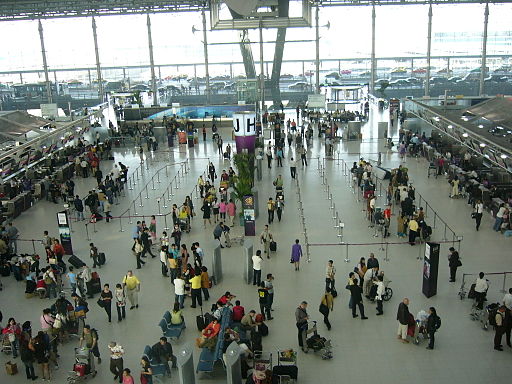By Lindsay Pollard-Post
People for the Ethical Treatment of Animals
If you’re heading home for the holidays — or just using your time off to travel somewhere sunny and warm — you’re in good company: During Thanksgiving alone, some 25 million people will be flying. Since holidays are about spending time with the ones we love, many people want to take their animal companions along. If your furry family members will be joining you on your journey, it’s important to plan ahead in order to avoid a holiday heartbreak and ensure that everyone arrives safely at your destination.
Air travel can be perilous for animals. Last October, Air Canada reportedly lost a dog named Larry between flights and then informed its employees — via a leaked e-mail — that they should “just ignore” the situation. Larry was being sent to a new family in British Columbia after his guardian had died of cancer. When an Air Canada employee let him out of his crate in San Francisco during a flight delay, Larry bolted. A good Samaritan later found Larry on a highway. He had been hit by a car and was so badly injured that he had to be euthanized.
Larry’s case is not an isolated incident. A recent analysis by a San Francisco–area TV station found that 302 animals died, were injured or disappeared on commercial airlines during a six-year period. Cargo holds are designed for luggage, not living beings, so they usually lack the ventilation and climate control found in passenger cabins. Many animals have died of heat exhaustion or hypothermia after being shipped as cargo. Even if they survive a flight, the experience of being tossed among the luggage in a loud, dark, strange place, far from their guardians, is extremely traumatic for animals.
If you must fly with your animal and he or she is small enough, take him or her in the cabin with you. Use a sturdy, well-ventilated carrier that is designed for animals and will fit under your seat. (Pre-trip, ensure that the carrier is large enough to allow the animal to stand up and turn around comfortably and slowly introduce him or her to the carrier by placing treats, toys and blankets inside.) Always keep the carrier upright and steady — swinging carriers, banging them into chairs or doors or holding them at awkward angles will likely make your animal friend nauseous and nervous before the plane even leaves the ground.
If your animal companion is too large to fit under the seat or unsuited to flying, it’s less risky and stressful to drive him or her to your destination. Cats should ride in carriers that are lined with a towel and a small litter tray and secured with a seat belt. Dogs are safest in a carrier or restrained with a canine seat belt, available from pet-supply stores and catalogs. Be sure to stop often to give dogs a chance to stretch their legs and relieve themselves.
Even the calmest cat or dog can become startled and bolt in unfamiliar surroundings. Countless animals have been lost at toll booths and rest stops this way. Be sure your animal friend is properly secured at all times and is wearing a collar with current ID tags, including temporary tags for each place that you will be staying during your travels. It’s also a good idea to have your animals microchipped before you leave.
For many animals — especially those who are elderly, shy or skittish — there really is no place like home for the holidays. Staying in their homes with a trusted caretaker gives animals the security of familiar surroundings and a consistent schedule.
Traffic jams and lines at airport security may be unavoidable during holiday travel, but by planning ahead and taking a few precautions, we can ensure that our animal companions arrive safely home sweet home, no matter how far away we roam.



